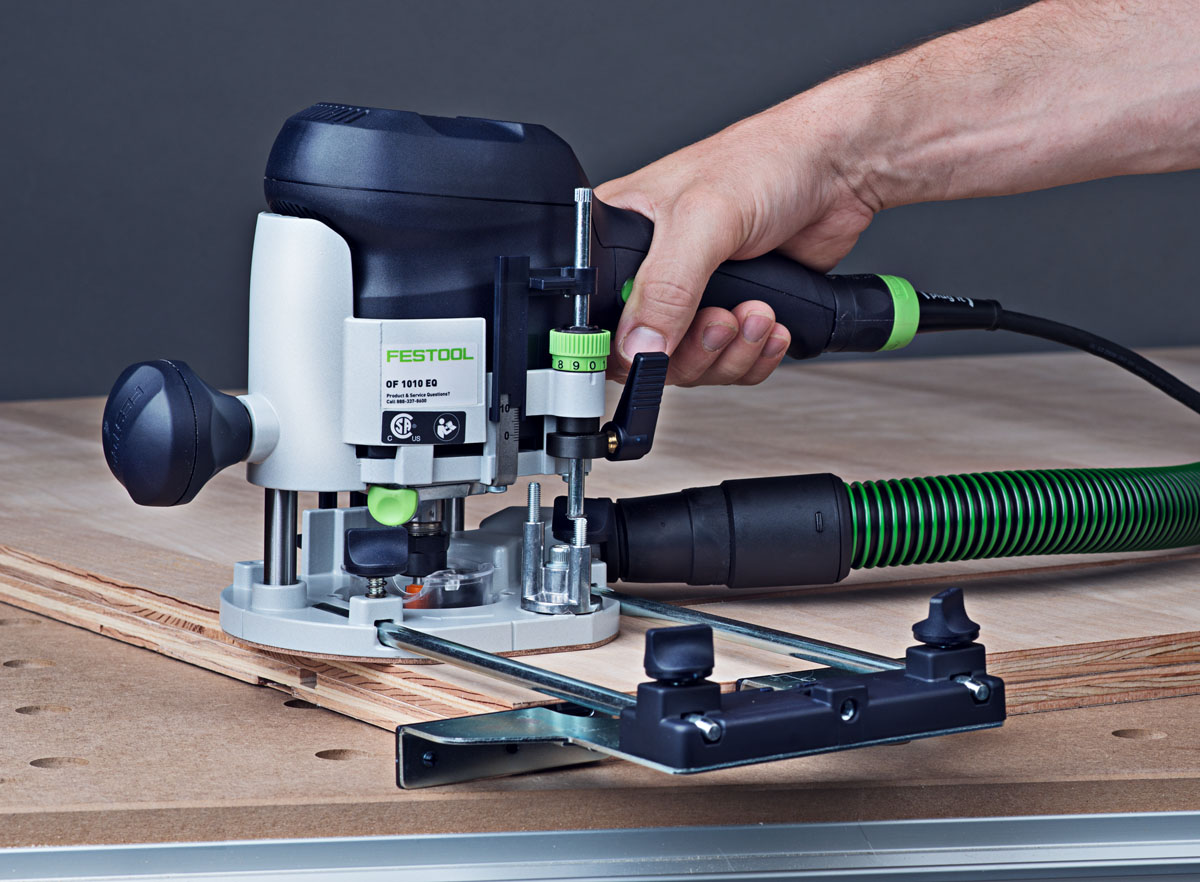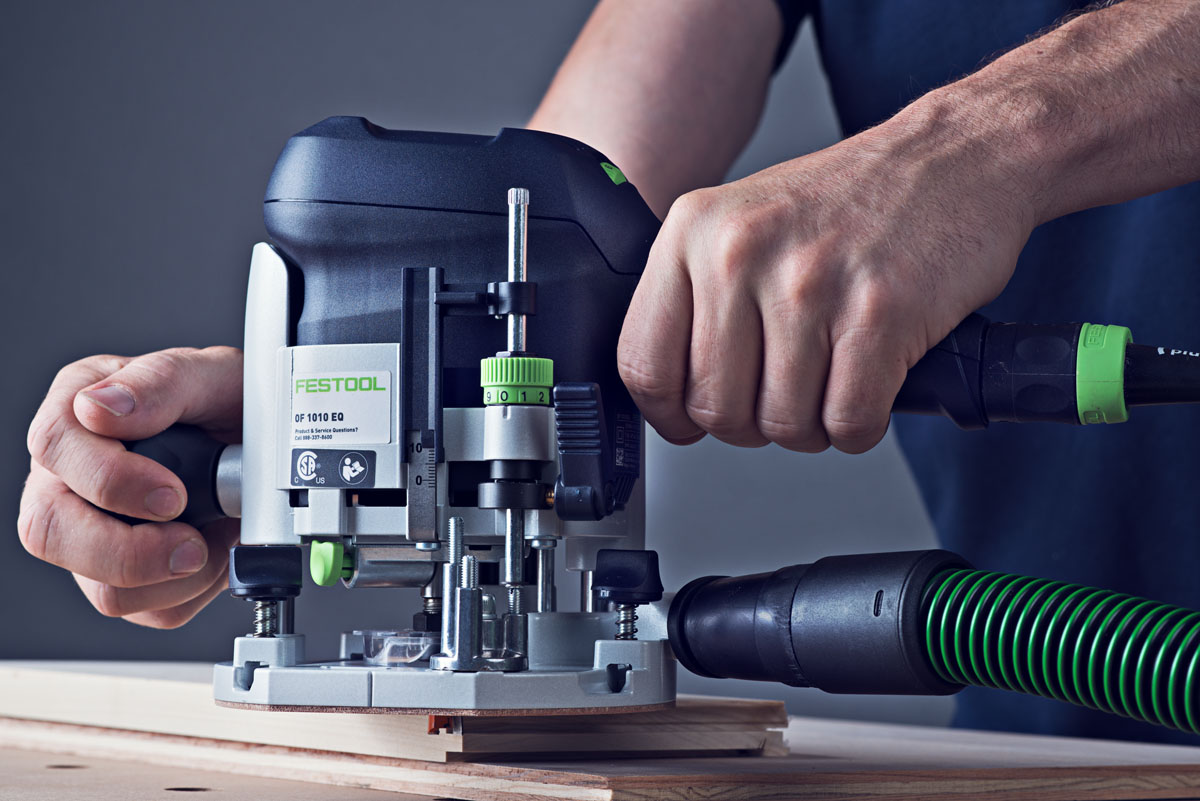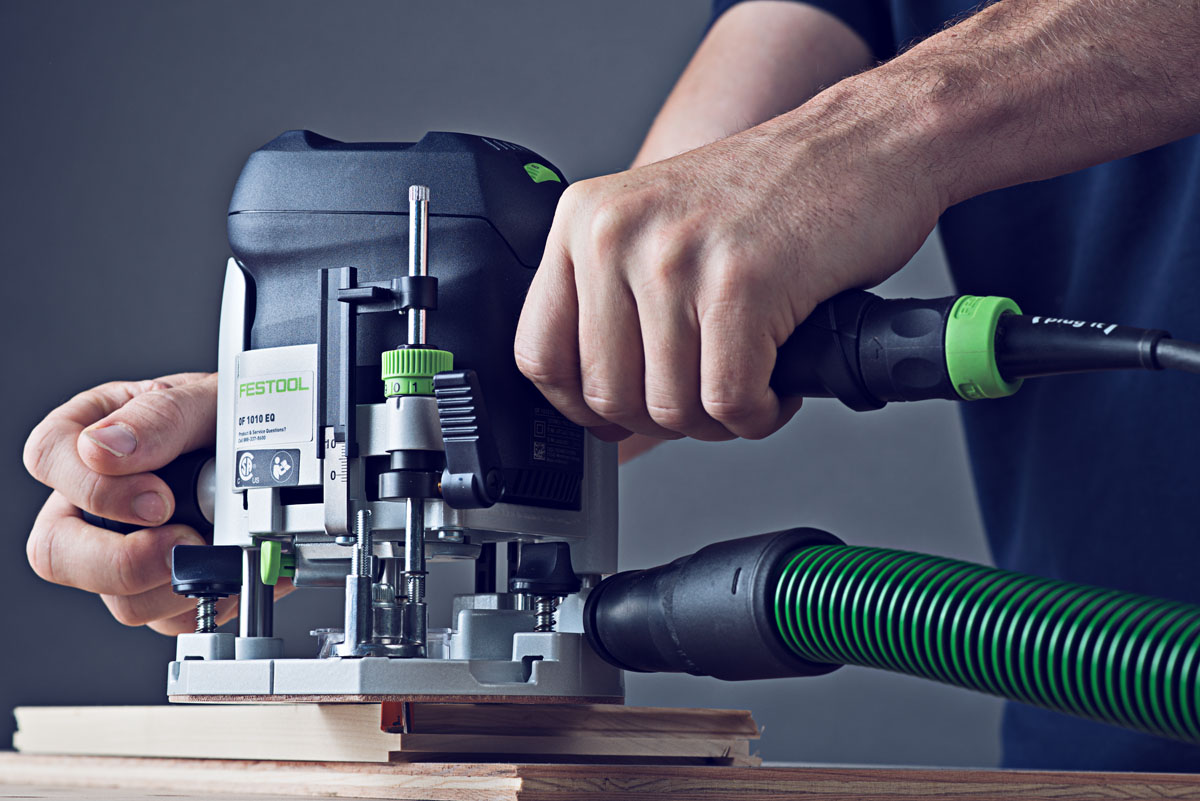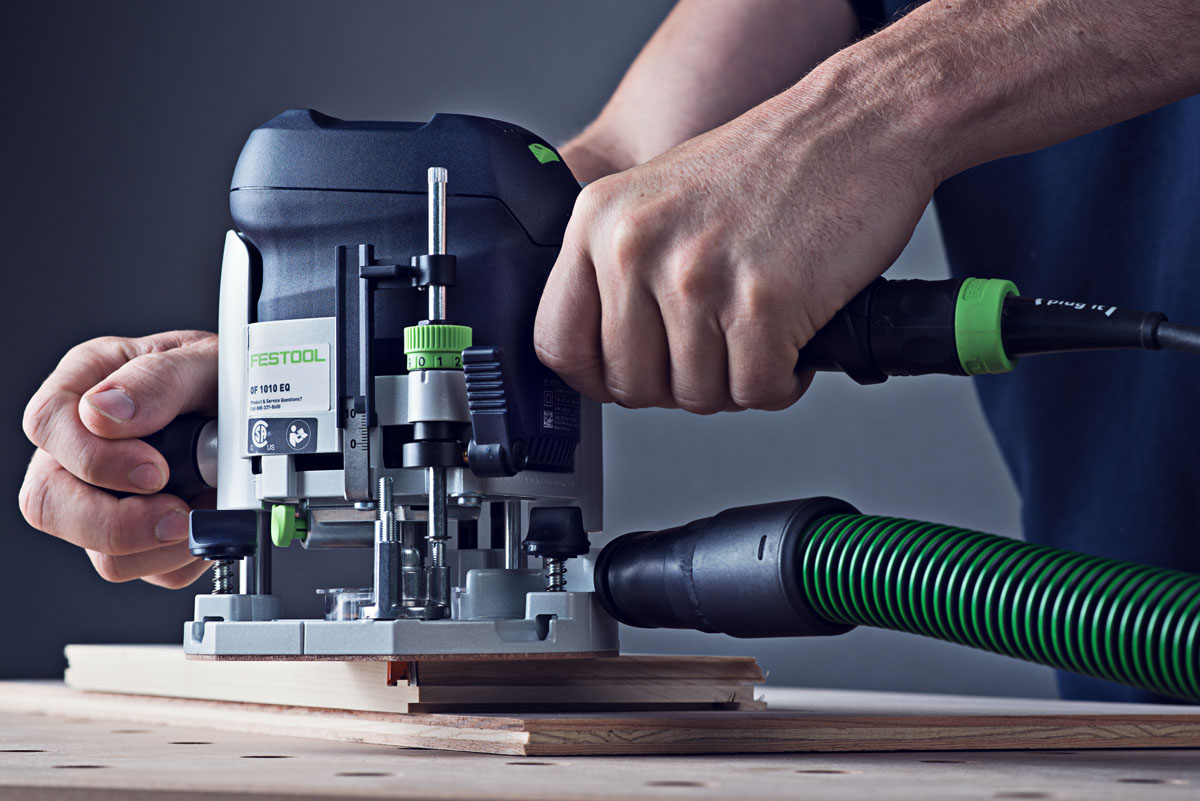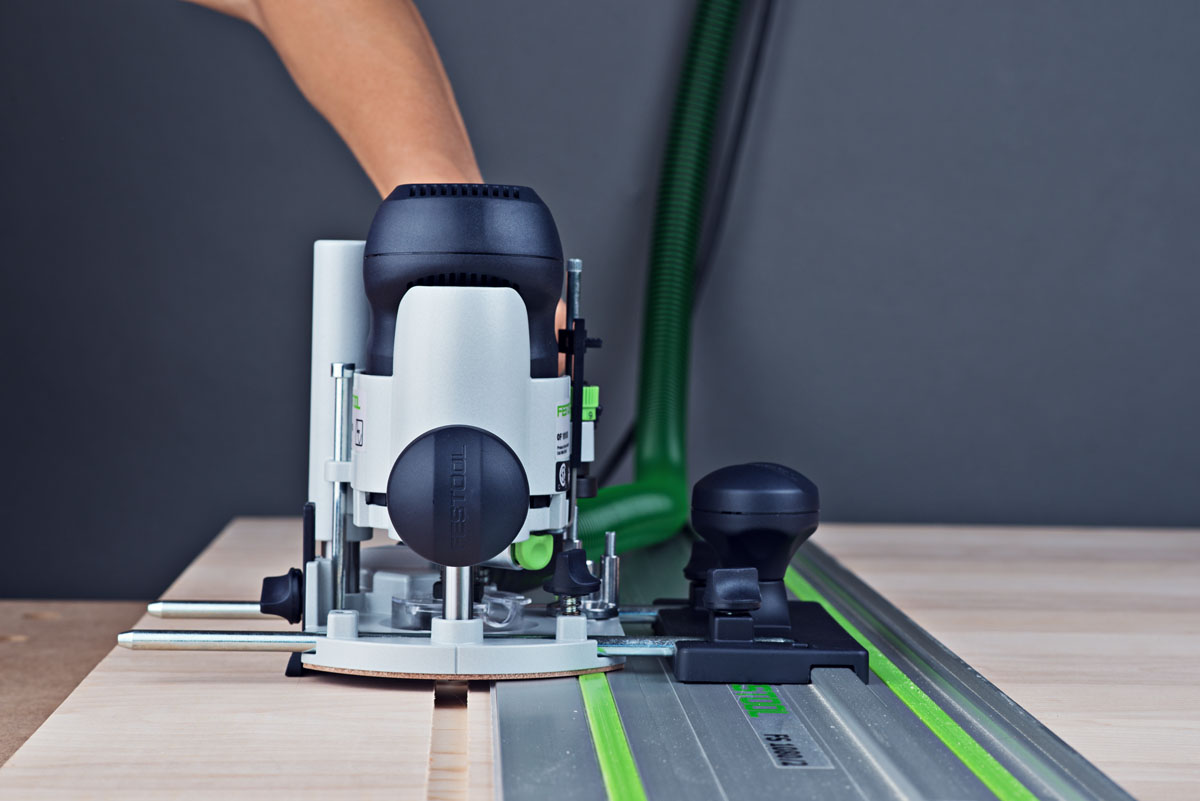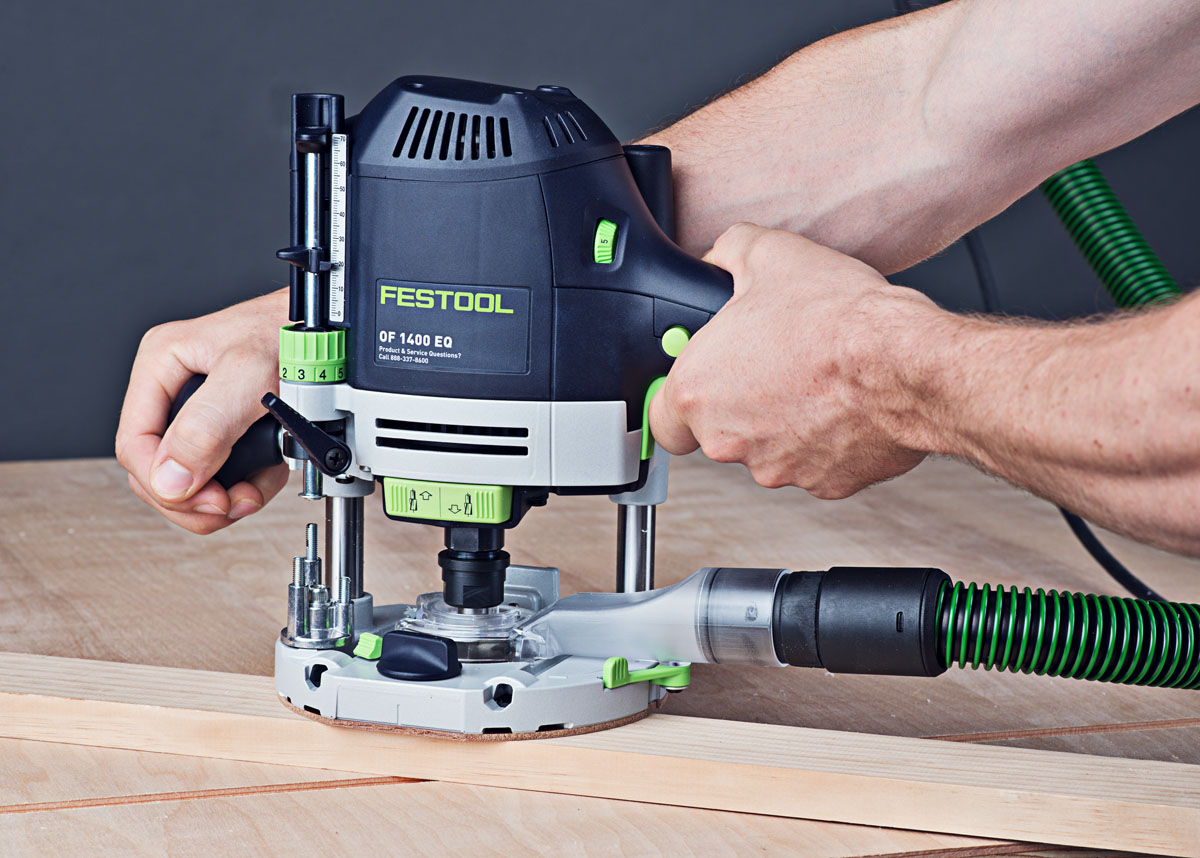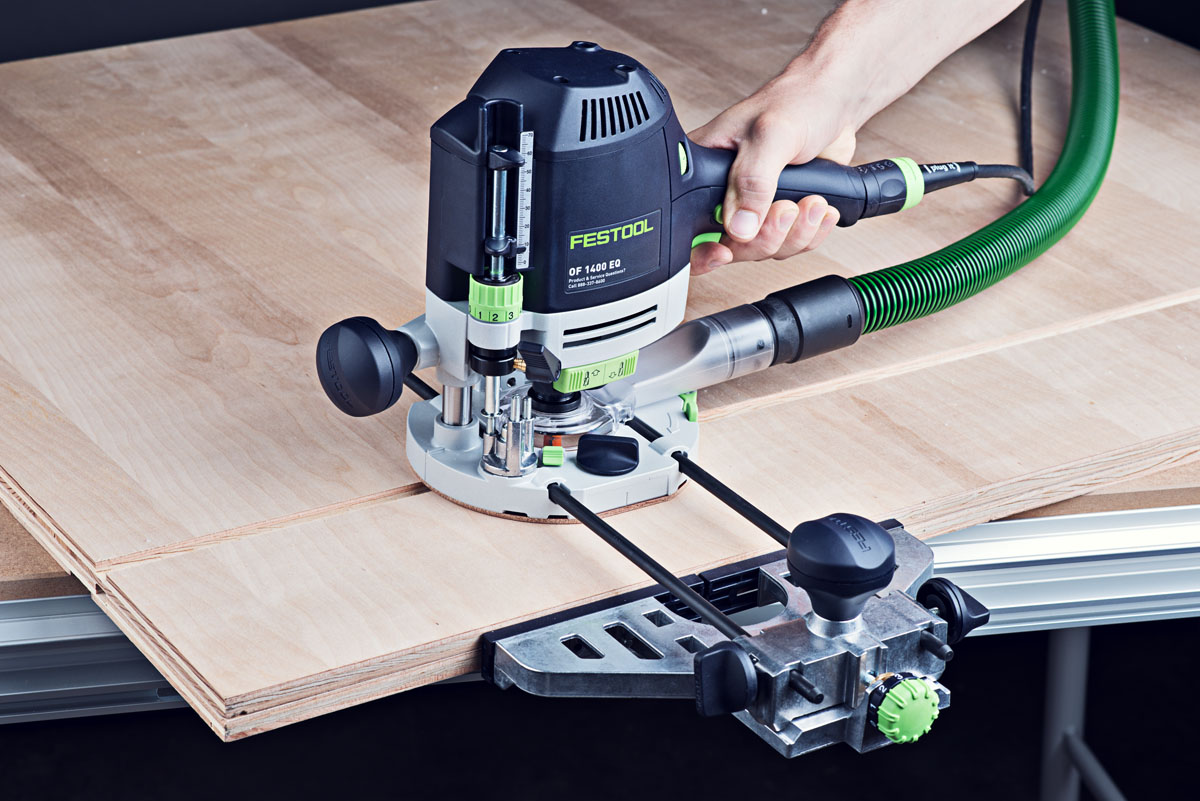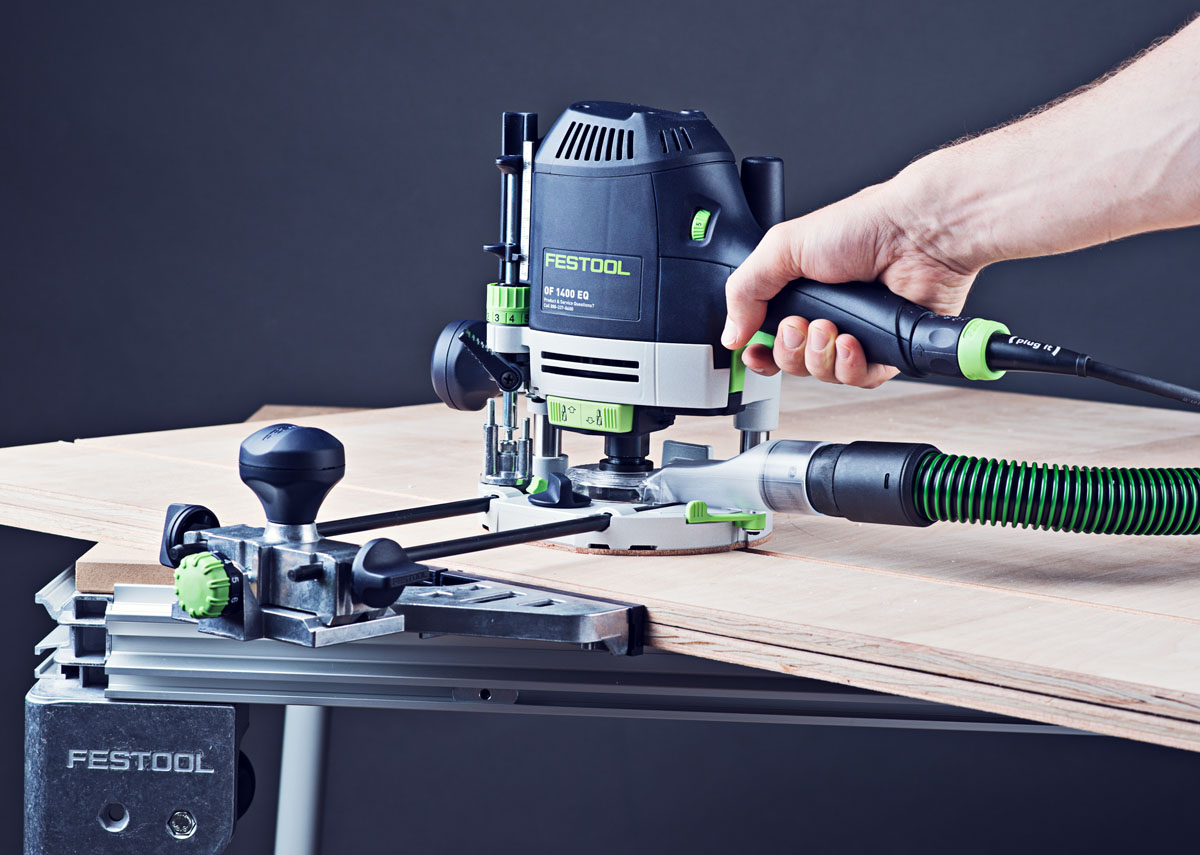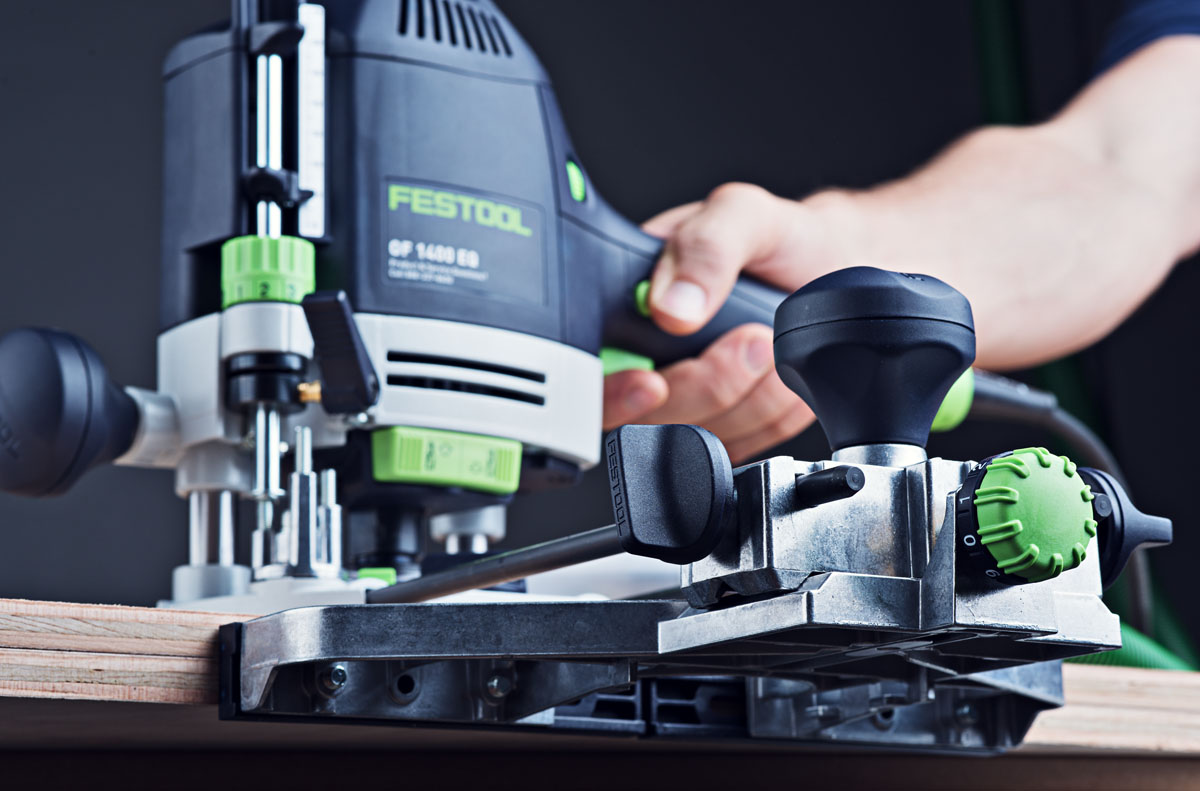When it comes to buying tools, the easiest way to decide which tools you need isn’t to look at the tools, but instead to look at the projects you want to complete. For my Festool purchases, whether the Kapex, the track saws, the Domino joiners, or the MFT/3, I always looked at what I wanted to create, and then found the Festool that would help me best accomplish the task.
So when it came time to build some new cabinets for a kitchen (the first time I’ve ever built kitchen cabinets, by the way), the first thing I did was study the process to better understand what I would need. For the most part, I already had the Festool tools I needed to accomplish the task, but the one tool I didn’t have was a Festool router. The problem was that to build cabinets, the router is an integral part of the setup, as the cabinet construction method I chose uses a series of dados and rabbets to join the plywood panels.
The solution? I bought the Festool OF 1400 router, edge guide and guide stop, the three components that were necessary to make perfect rabbets and dados anywhere I needed them.
And while I could tell you the story ends here, this purchase led me down a slippery slope of Festool routing goodness, subsequently leading me to add both another router (the OF 1010) as well as the Festool router table.
The end result? I now have a Festool router setup that not only lets me build kitchen cabinets, but also one that lets me route nearly anything I need. I’m going to save my thoughts on the Festool router tables for a second article, and instead share my thoughts on both the Festool OF 1400 and the Festool OF 1010 today. If you’re new to routers or you already own a router from another brand, you’ll hopefully find it insightful.
First up, the Festool OF 1400.

Festool OF 1400 Router
Festool OF 1400 Review
I’ll be honest, when it’s time to purchase a new tool, I spend hardly any time researching tool brands, simply because I’ve always been happy with what I’ve purchased from Festool. So when it came time to purchase a router, the majority of my time wasn’t spent researching brands, but rather researching which Festool router to buy. Festool makes four routers, ranging from the smallest MFK trim router up to the biggest OF 2200, with the OF 1010 and the OF 1400 falling in between. My research showed me that both are great for handheld work (meaning outside of a router table), with the Festool OF 1400’s added power offering more flexibility for future projects. It was this flexibility that led me to pick the OF 1400 first, and for anyone choosing a single router, it’s the router I would recommend.
Getting technical for a second, the OF 1400 offers 1400 watts of power and accepts 1/2″, 1/4″ or 8 mm bits, while MMC electronics provide constant speed under load. What this means in the real world is that the OF 1400 accepts any router bit you’ll need, and its motor can handle the majority of your routing tasks. It’s basically the must-have router in the Festool lineup.
So what makes the Festool OF 1400 router so great? It’s an answer that will vary for everyone that uses it, as there’s a huge range of tasks you can accomplish with a router, and I’m far from the most advanced router user. But for me, what makes the OF 1400 so great is simply how well it helped me accomplish the tasks I needed it for. I borrowed another highly regarded router from my father-in-law for the sake of comparison, and I can tell you there really is no comparison. There wasn’t a single element of the other router that I preferred to the Festool, as the Festool is simply better engineered and significantly easier to use.

Festool OF 1400 Router
Running through the routing process quickly to show you what I mean, step one is inserting the router bit. Unlike many routers that require two wrenches to loosen or tighten the collet, the OF 1400 utilizes a ratcheting spindle, requiring only a single wrench. This may not seem like that big of a deal, but when making numerous bit changes, it’s something that you will come to love, as it not only speeds up the process, but also saves you from the almost guaranteed smashed knuckles you’ll experience with two wrenches.
Once the bit is in, step two is attaching the power cord and dust collection. The OF 1400 uses the same dust collection hose and Plug-It power cord found on the rest of the Festool family of tools, meaning attaching it to your dust extractor takes only a second when switching between the router and other tools. And like other Festool tools, the dust collection is superb. Not only is there a dust collection port that attaches to the top of the OF 1400, but there’s also a swiveling chip collector for when you’re routing edges, further enhancing dust collection. Compared to the other router I used, there was no absolutely no comparison in terms of dust collection – the OF 1400 was at an entirely different level. For me, the dust collection alone is enough to justify purchasing the OF 1400.
The final step before routing is setting the plunge depth of the router (which you can set up to 2-3/4″). It’s somewhat difficult to explain without actually having the router in front of you, but there are three depth-stop turrets on the OF 1400 that you can select for easy, tool-free step cutting. Once you’ve picked the appropriate turret, a precision depth adjustment knob offers the flexibility to adjust in 1/256″ increments, with detents for each 1/10 mm. While initially it seemed like an odd design for setting the depth, once you’ve grown accustomed to it you’ll appreciate how quick and easy it is to change the router’s depth in a precise and repeatable fashion. And once your depth is set, locking the router at the plunge depth is accomplished by rotating the large, easy-to-grip knob, which again is both simple and incredibly intuitive. Compared to the other router that used multiple bases and poor plunge depth settings, the Festool OF 1400 was leaps and bounds ahead of its competitor in terms of ease-of-use and precision.

Festool OF 1400 Router with edge guide
Once set up, the final step is the routing itself. And when it came time to route my first rabbet, the OF 1400 was brilliant. The cut was smooth, the OF 1400 felt perfect in my hand, and the entire routing process went perfectly. Switching to the other router didn’t feel nearly as good, as the router felt out of balance and the cut just felt more strained. In a word, the OF 1400 just felt effortless when compared to the other router. Over the next few days I used both routers for various other routing tasks including more rabbets, dados and decorative edges, and my sentiment always remained the same – the Festool OF 1400 was easier to handle and always felt better. Its superior balance meant I didn’t make the mistakes that I did with the other router, and overall the Festool simply outperformed its competitor. Before using the Festool I wondered whether it could really be that much better than other routers, but after using the OF 1400, I can say that unequivocally it is. After using both, there’s absolutely no way I’d trade the Festool, irregardless of price.
My advice: if you need a router and don’t know which one to get, get the Festool OF 1400. It’s the best all-around router you’ll find, bar none.

Festool OF 1010 Router
Festool OF 1010 Review
So with my affinity for the Festool OF 1010, you may be wondering why I also purchased the OF 1010. The answer: after purchasing the Festool router table, I mounted the OF 1400 to it, so rather than having to always remove it, I opted for the OF 1010 for smaller routing tasks. Did I need it? No. But now that I have it, I can tell you that depending on your needs, it’s a great router that will also let you accomplish a huge variety of routing tasks.
The biggest difference between the OF 1010 and the OF 1400 is the size. It’s a little bit smaller, a little bit more maneuverable, and is the perfect size if you’re handheld routing with bits requiring either 1/4″ or 8mm collets. If you need a 1/2″ collet you need the OF 1400, but for any bits requiring 1/4″ collet size, the OF 1010’s 1010 watts offer enough power to deliver perfectly clean cuts every time in a package that’s both maneuverable and really well balanced.
The best part of the OF 1010 is that it operates as smoothly as the OF 1400, with all of the intuitive features still in place. It uses the same easy-to-hold barrel grip, allowing single hand routing, while a plunge depth of up to 2 1/8″ is again controlled by three rotating turrets and a micro-adjustable depth control knob. Like the OF 1400, the OF 1010 is adjustable in 1/256″ increments, while the OF 1010’s plunge depth is locked in place by the same easy-to-grip plunge lock. What’s great about the setting the depth is that if you’re using the OF 1010 and the OF 1400 together, they both operate the same way, making the thought process effortless when switching between the two. Further similarities with the OF 1400 are shared Plug-It power cords and dust collection hoses, making tool changes quick and painless, along with a single wrench bit change.

Festool OF 1010 Router
In use, you may be wondering how well the OF 1010 handles compared to the OF 1400, and for me, I find the OF 1010 to be superb, much like the OF 1400. Its lighter weight and small size make some routing tasks, such as routing things in awkward positions, easier to accomplish, and for extended use the OF 1010’s weight is excellent, leading to less fatigue when compared to its bigger brother. What the two share is the same silky smooth routing operation, with cuts feeling effortless and always under control. I would say that for me, even if my OF 1400 wasn’t mounted in a table most of the time, I would still reach for the OF 1010 if I was using a bit requiring a 1/4″ collet, due simply to its smaller size. And while I’ve yet to use it for dovetail joints, the OF 1010’s lighter weight and maneuverability seem well adapted for use in a routing template guide compared to a larger router.
My advice: if you’re looking for a lighter weight alternative to the OF 1400 or the majority of your work uses router bits requiring a 1/4″ collet, the OF 1010 is the perfect option, offering ample power and superb maneuverability.

Festool OF 1400 Router guide rail
Festool Router Accessories
No matter which router you get, you’ll almost certainly need accessories to go with them. For both my OF 1400 and OF 1010 routers I opted for the edge guide and guide stops, for the simple fact that both were integral in helping me route rabbets and dados for my kitchen cabinets.
I would say that for almost everyone, the edge guide is a must have accessory for your router. Not only does it increase stability when routing edges, it also allows precise fine-tuning of your cuts, which for me translated into perfect rabbets the first time I used the router. As for the guide stops, they allow you attach your Festool router to Festool’s guide rails, letting you route perfectly straight lines anywhere you need them, which again was exactly what I needed for my kitchen cabinet build.
From there, the list of router accessories is extensive, and will vary depending on your projects and needs. Edging guides, trammels for routing circles, the LR32 hole drilling template, and many more accessories all extend the functionality of your router to accomplish anything you need, and you can find them all on the Festool website.
You can learn more about the Festool family of routers and accessories at the official Festool USA website, or learn more about the Festool OF 1400 and Festool OF 1010 directly. Also be sure to check out both routers in the photo gallery below.



